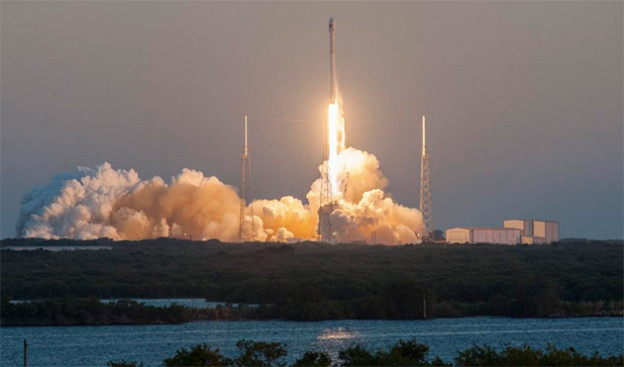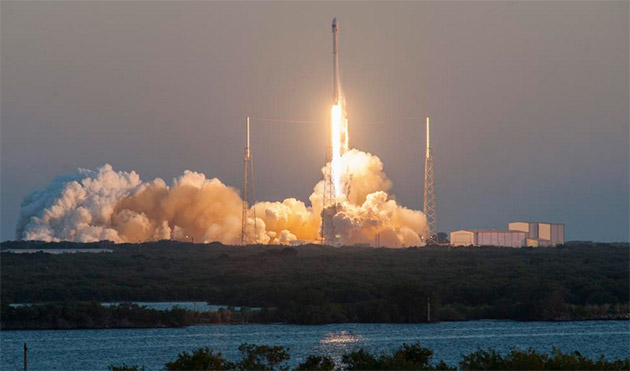Elon Musk’ s SpaceX have successfully delivered a new satellite into orbit around earth. The DSCOVR satellite has been lying in storage gathering dust for over ten years, but with new funding for a launch found by USAF in 2013, SpaceX managed to get it into orbit using their Dragon 9 rocket from Cape Canaveral after a much delayed launch.
The reusable Dragon 9 delivered the satellite up into orbit without a hitch, but the rocket’s companion landing site, an autonomous drone ship, was not used for the landing after a quick decision by the rocket’s operators. A water landing was therefore the only other choice. Last time the drone ship was used the rocket hit the landing pad on target, but also exploded on impact.
SEE ALSO: DARPA Testing Deep Web Search Tool
The drone ship might have been sidelined due to stormy weather, but the launch itself was a great PR event for SpaceX. The first deep space mission from the company, DSCOVR will start a million mile journey out into the unknown in order to advance science, monitoring ‘space weather’ – interstellar turbulence that might affect space travel in the future.
DSCOVR stand for Deep Space Climate Observatory, and the sattelite first got off the drawing board in 1999, but due to a lack of ways to get into orbit and a lack of funding, the device was shelved for over a decade until SpaceX got it into orbit. The satellite will now ramble its way from here all the way to the Sun-Earth Lagrangian point, 1,500,000 kilometres or 930,000 miles from earth.
But what is this ‘space weather’ that DSCOVR is journeying so far to look at? Well, the stars often throw out a lot of energy and radiation which can disrupt the operations of technology sent into space. On earth our magnetic field and atmosphere protect us from space weather, but out in the void there’s nothing between potential starships and those harmful emissions.
SEE ALSO: Concept Microwave Shows How Hot Food Is
Elon Musk Tweeted positively about the landing, even though the drone ship wasn’t used. the Falcon 9 rocket lands just 370 miles off the coast of Florida, and everything went smoothly. Next time, if weather permits, the drone ship could be used successfully with Musk promising “high probability of good droneship landing in non-stormy weather.”.
SpaceX is just one of NASA’s current contractors who are to deliver objects into space, such as supplying the International Space Station. Sometime into the future, after 2017 at least, the space station will see delivery of astronauts from the US by SpaceX’s Dragon 9 rocket.
Via: Engadget
More on DSCOVR @ Wikipedia

